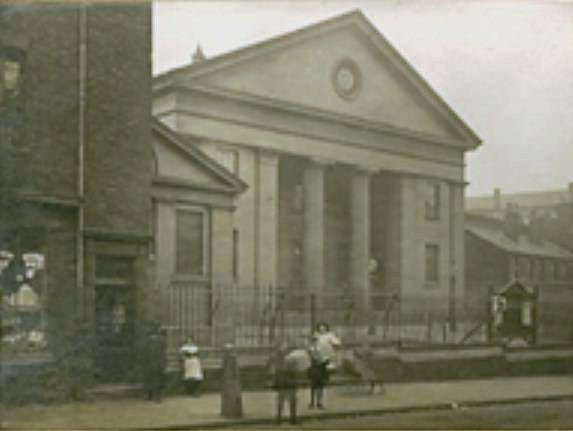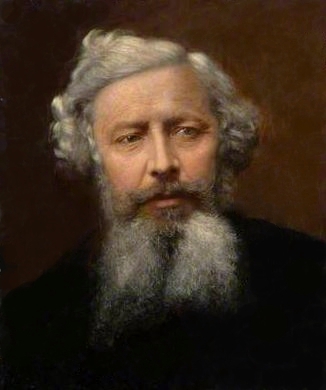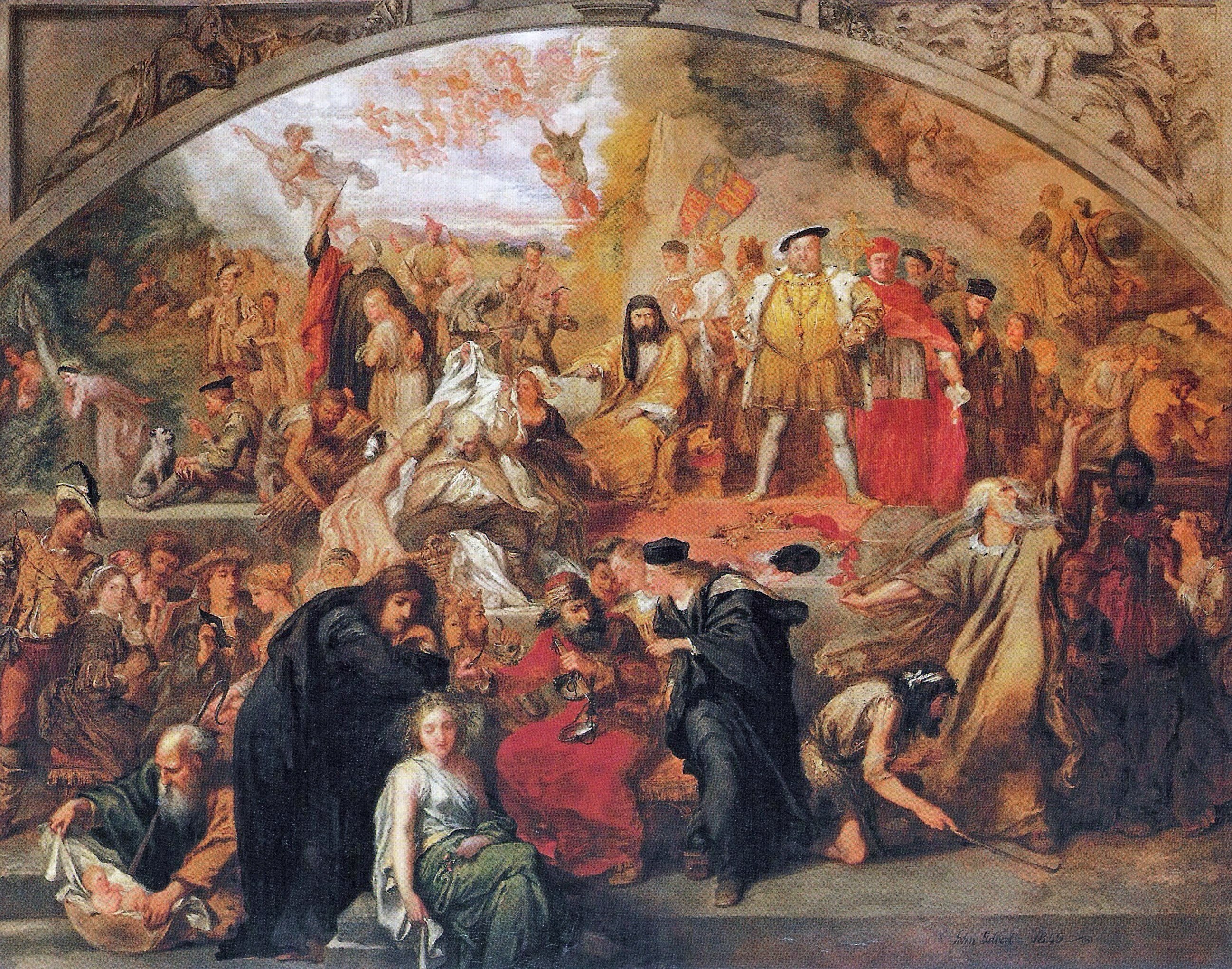|
William Harris (Birmingham Liberal)
William Harris (1826 – 25 March 1911) was a Liberal politician and strategist in Birmingham, England, in an era of dramatic municipal reform. On his death, he was described by one obituary-writer as "one of the founders of modern Birmingham". J. L. Garvin called him "the Abbé Sieyès of Birmingham" (in allusion to one of the chief political theorists of the French Revolutionary era); and Asa Briggs "a most active and intelligent wire-puller behind the scenes". He was dubbed the "father of the Caucus", the highly organised and controversial Liberal party machine that had its origins in Birmingham, but was afterwards introduced at national level to the National Liberal Federation. He served as the first Chairman of the National Liberal Federation from 1877 to 1882. By profession he was an architect and surveyor; and he was also a prolific journalist and author. Early life William Harris was born in 1826 in Cheadle, Staffordshire, the son of Joseph Harris and his wife Elizab ... [...More Info...] [...Related Items...] OR: [Wikipedia] [Google] [Baidu] |
Cheadle, Staffordshire
Cheadle is a market town and civil parish in the Staffordshire Moorlands District of Staffordshire, England, with a population of 12,165 at the 2011 census. It is located between Uttoxeter, Leek, Ashbourne and Stoke-on-Trent. History Cheadle is an historic market town dating back to Anglo-Saxon times, being referred to in Domesday Book (1086). It lies within the historic Staffordshire Hundred of Totmonslow: for administrative purposes, it is now part of the Staffordshire Moorlands area. Cheadle appears in Domesday Book as "Celle" held by the lord of the manor, Robert of Stafford, at the time the area covered 6 miles by 3 miles and listed 9 families. In 1176 the Basset family acquired the manor of "Chedle" and in 1250 Ralph Basset was granted a market charter and annual fair by King Henry III. In 1309, 75 families are recorded as using a corn-grinding mill sited near Mill Road. Fifty years later, a new church was built in the village replacing a 12th-century structure and t ... [...More Info...] [...Related Items...] OR: [Wikipedia] [Google] [Baidu] |
Buildings Of England
The Pevsner Architectural Guides are a series of guide books to the architecture of Great Britain and Ireland. Begun in the 1940s by the art historian Sir Nikolaus Pevsner, the 46 volumes of the original Buildings of England series were published between 1951 and 1974. The series was then extended to Scotland, Wales Wales ( cy, Cymru ) is a Countries of the United Kingdom, country that is part of the United Kingdom. It is bordered by England to the Wales–England border, east, the Irish Sea to the north and west, the Celtic Sea to the south west and the ... and Ireland in the late 1970s. Most of the English volumes have had subsequent revised and expanded editions, chiefly by other authors. The final Scottish volume, ''Lanarkshire and Renfrewshire'', was published in autumn 2016. This completed the series' coverage of Great Britain, in the 65th anniversary year of its inception. The Irish series remains incomplete. Origin and research methods After moving to the United King ... [...More Info...] [...Related Items...] OR: [Wikipedia] [Google] [Baidu] |
George Dixon (MP)
George Dixon (1820 – 24 January 1898) was an English Liberal Party then Liberal Unionist politician who was active in local government in Birmingham and sat in the House of Commons in two periods between 1867 and 1898. He was a major proponent of education for all children. Life Born in 1820 in Gomersal, Yorkshire, he was educated at Leeds Grammar School and learned French in France. He moved to Birmingham in 1838 with his brother and joined Rabone Brothers, a firm of merchants. He became a partner in 1844 and rose to become head of the firm in which he remained all his life. Dixon entered local government as a councillor for Edgbaston in Birmingham in 1863. He was elected Mayor in November 1866. In July 1867 he resigned office to become a parliamentary candidate for Birmingham after the death of William Scholefield. He was elected Member of Parliament (MP) on 23 July 1867. He was elected to the School Board in 1870, and chairman in 1876, after retiring from parliament whe ... [...More Info...] [...Related Items...] OR: [Wikipedia] [Google] [Baidu] |
Church Of The Saviour, Birmingham
The Church of the Saviour in Edward Street, Birmingham, was a liberal Unitarian church founded in 1845 for the liberal nonconformist preacher, George Dawson. It became the centre of the programme of social and municipal improvement known as the Civic Gospel, and was instrumental in launching Joseph Chamberlain's political career. Founding Dawson was originally a Baptist pastor in the rapidly expanding industrial town of Birmingham, to which he moved in 1844 to become minister of the Mount Zion Baptist Chapel. The eloquence and beliefs that the young man expressed soon attracted a large following. However, Dawson's views did not fit the orthodoxy of the Baptist church, so in 1845 he left, followed by much of his congregation, to become minister of the theologically liberal Church of the Saviour, a "Free Christian" church erected for him by his supporters, where "no pledge was required, of minister or congregation; no form of belief was implied by membership; no difference in ... [...More Info...] [...Related Items...] OR: [Wikipedia] [Google] [Baidu] |
Civic Gospel
The Civic Gospel was a philosophy of municipal activism and improvement that emerged in Birmingham, England, in the mid-19th century. Tracing its origins to the teaching of independent nonconformist preacher George Dawson, who declared that "a town is a solemn organism through which shall flow, and in which shall be shaped, all the highest, loftiest and truest ends of man's moral nature", it reached its culmination in the mayoralty of Joseph Chamberlain between 1873 and 1876. After Dawson's death in 1876 it was the Congregationalist pastor R. W. Dale who took on the role as the movement's leading nonconformist spokesman. Other major proponents included the Baptist Charles Vince and the Unitarian H. W. Crosskey. Early years During its early years in the 1850s and 1860s the concept of the Civic Gospel combined Dawson's liberal theology with a social and political vision of civic brotherhood that saw a city as having a communal interest that transcended those of its co ... [...More Info...] [...Related Items...] OR: [Wikipedia] [Google] [Baidu] |
George Dawson (preacher)
George Dawson (24 February 182130 November 1876) was an English nonconformist preacher, lecturer and activist. He was an influential voice in the calls for radical political and social reform in Birmingham, a philosophy that became known as the Civic Gospel. Ministry Dawson was born in Brunswick Square, London, in 1821. His father was headmaster of a Baptist school. He was educated at home, then at Marischal College, Aberdeen, and the University of Glasgow. Oxford and Cambridge seemed not an option as, owing to the Test Act, for centuries up to 1828 only Anglicans were allowed to matriculate (Oxford) or graduate (Cambridge). In 1843 Dawson accepted a call to the pastorate of the Baptist church at Rickmansworth. He moved to the rapidly expanding industrial town of Birmingham in 1844 to become minister of the Mount Zion Baptist Chapel where the eloquence and beliefs that the young man expressed soon attracted a large following. However, Dawson's views did not fit the orth ... [...More Info...] [...Related Items...] OR: [Wikipedia] [Google] [Baidu] |
Pevsner Architectural Guides
The Pevsner Architectural Guides are a series of guide books to the architecture of Great Britain and Ireland. Begun in the 1940s by the art historian Sir Nikolaus Pevsner, the 46 volumes of the original Buildings of England series were published between 1951 and 1974. The series was then extended to Scotland, Wales and Ireland in the late 1970s. Most of the English volumes have had subsequent revised and expanded editions, chiefly by other authors. The final Scottish volume, ''Lanarkshire and Renfrewshire'', was published in autumn 2016. This completed the series' coverage of Great Britain, in the 65th anniversary year of its inception. The Irish series remains incomplete. Origin and research methods After moving to the United Kingdom from his native Germany as a refugee in the 1930s, Nikolaus Pevsner found that the study of architectural history had little status in academic circles, and that the amount of information available, especially to travellers wanting to inform themselv ... [...More Info...] [...Related Items...] OR: [Wikipedia] [Google] [Baidu] |
Shakespeare's Plays
Shakespeare's plays are a canon of approximately 39 dramatic works written by English poet, playwright, and actor William Shakespeare. The exact number of plays—as well as their classifications as Shakespearean tragedy, tragedy, Shakespearean history, history, Shakespearean comedy, comedy, or otherwise—is a matter of scholarly debate. Shakespeare's plays are widely regarded as being among the greatest in the English language and are continually performed around the world. The plays have been translated into every major Modern language, living language. Many of his plays appeared in print as a series of Folios and Quartos (Shakespeare), quartos, but approximately half of them remained unpublished until 1623, when the posthumous First Folio was published. The traditional division of his plays into tragedies, comedies, and histories follows the categories used in the First Folio. However, modern criticism has labeled some of these plays "Shakespearean problem play, problem play ... [...More Info...] [...Related Items...] OR: [Wikipedia] [Google] [Baidu] |
Stratford-upon-Avon
Stratford-upon-Avon (), commonly known as just Stratford, is a market town and civil parish in the Stratford-on-Avon district, in the county of Warwickshire, in the West Midlands region of England. It is situated on the River Avon, north-west of London, south-east of Birmingham and south-west of Warwick. The town is the southernmost point of the Arden area on the edge of the Cotswolds. In the 2021 census Stratford had a population of 30,495; an increase from 27,894 in the 2011 census and 22,338 in the 2001 Census. Stratford was originally inhabited by Britons before Anglo-Saxons and remained a village before the lord of the manor, John of Coutances, set out plans to develop it into a town in 1196. In that same year, Stratford was granted a charter from King Richard I to hold a weekly market in the town, giving it its status as a market town. As a result, Stratford experienced an increase in trade and commerce as well as urban expansion. Stratford is a popular touris ... [...More Info...] [...Related Items...] OR: [Wikipedia] [Google] [Baidu] |
HSBC
HSBC Holdings plc is a British multinational universal bank and financial services holding company. It is the largest bank in Europe by total assets ahead of BNP Paribas, with US$2.953 trillion as of December 2021. In 2021, HSBC had $10.8 trillion in assets under custody (AUC) and $4.9 trillion in assets under administration (AUA), respectively. HSBC traces its origin to a hong in British Hong Kong, and its present form was established in London by the Hongkong and Shanghai Banking Corporation to act as a new group holding company in 1991; its name derives from that company's initials. The Hongkong and Shanghai Banking Corporation opened branches in Shanghai in 1865 and was first formally incorporated in 1866. HSBC has offices in 64 countries and territories across Africa, Asia, Oceania, Europe, North America, and South America, serving around 40 million customers. As of 2022, it was ranked no. 38 in the world in the Forbes rankings of large companies ranked by sales, profits ... [...More Info...] [...Related Items...] OR: [Wikipedia] [Google] [Baidu] |
Bennetts Hill
Bennetts Hill is a street in the Core area of Birmingham City Centre, United Kingdom. It runs from New Street, uphill to Colmore Row, crossing Waterloo Street in the process. It is within the Colmore Row conservation area. History Bennetts Hill was created as part of the 19th-century Inge estate development. 11 Bennetts Hill (now demolished) was the birthplace of the artist Edward Burne-Jones in 1833, a fact commemorated by a Birmingham Civic Society blue plaque on the site. The neighbouring house, 10 Bennetts Hill, was occupied by David Barnett and Samuel Neustadt, both Jewish jewellery merchants. As a child Edward Burne-Jones played with their children, shared entertainments, and even took part in Jewish festivals. For the Purim festival, he arrived early and wore disguises as the other children did. John Pemberton, who developed the Priory Estate (including Old Square) in the early 18th century, also lived on Bennetts Hill. Architecture Bennetts Hill has buildings i ... [...More Info...] [...Related Items...] OR: [Wikipedia] [Google] [Baidu] |









